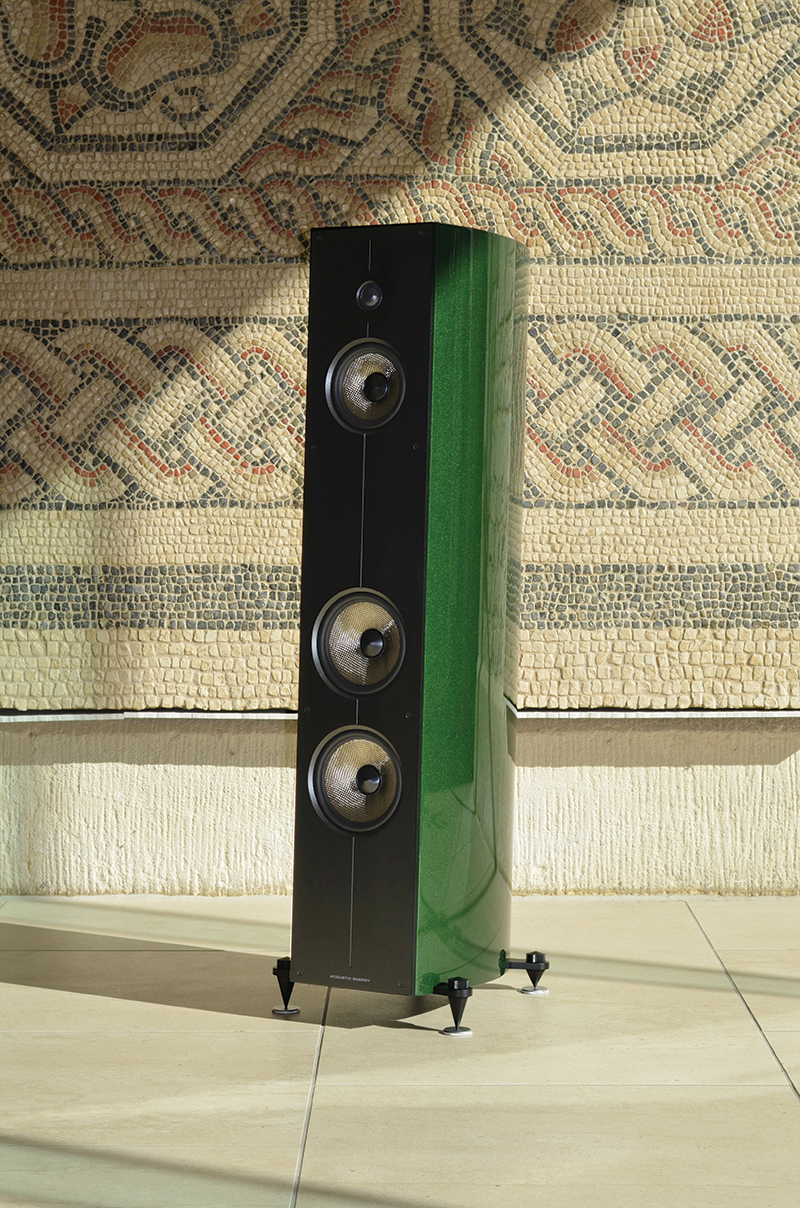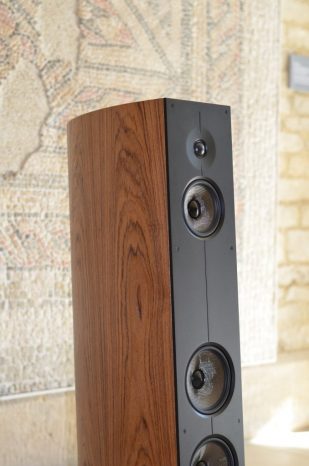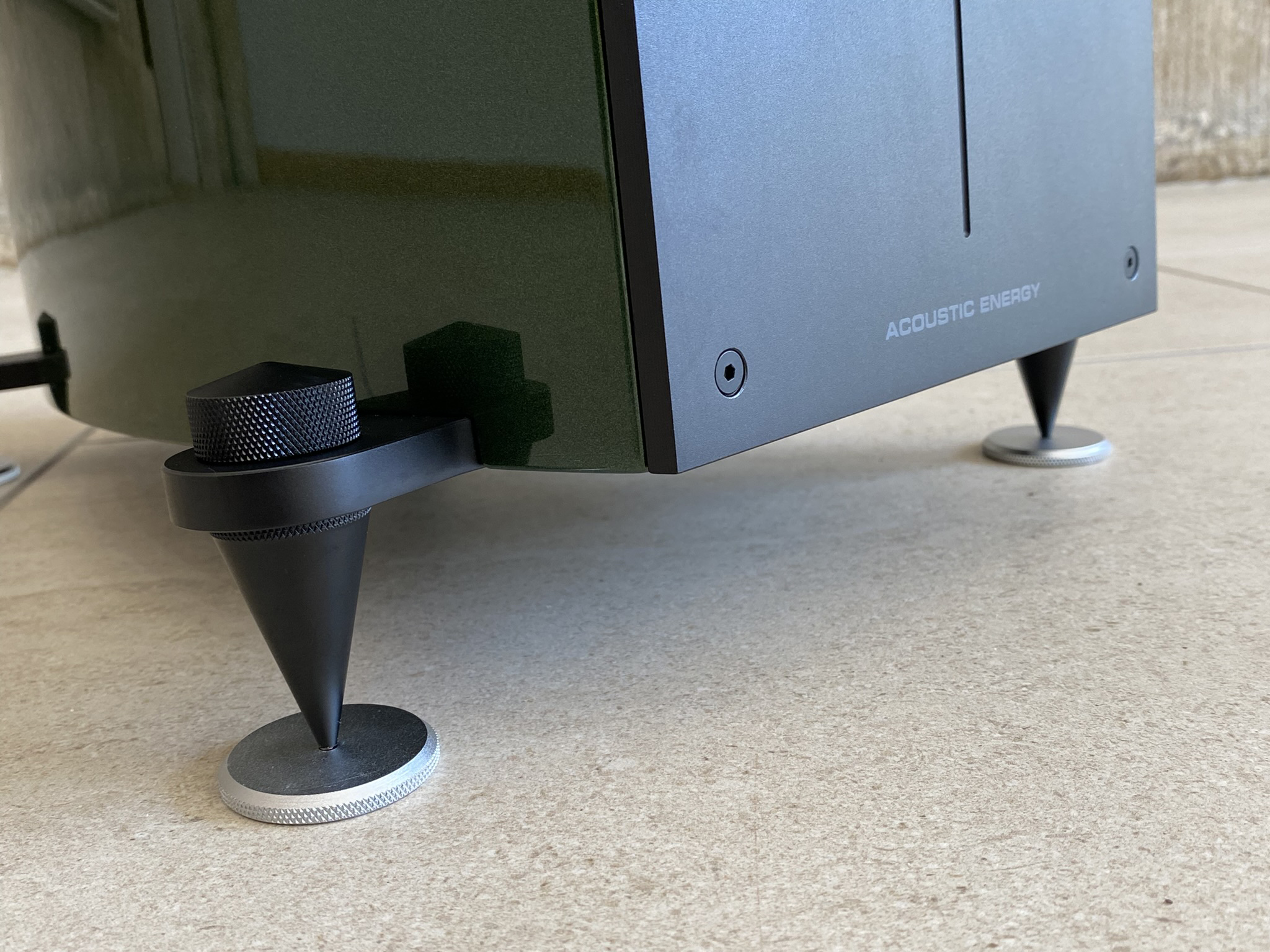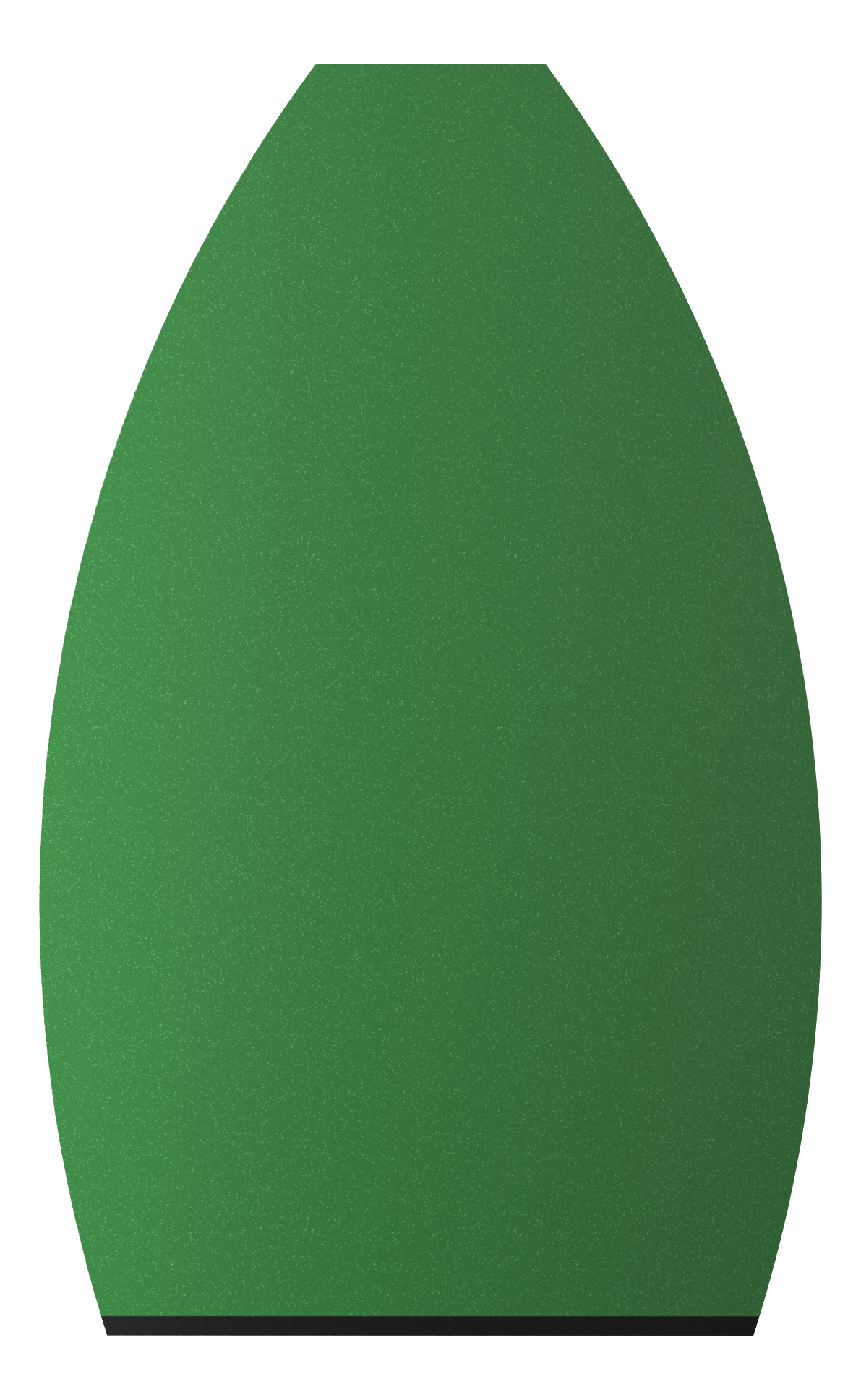CORINIUM by Acoustic Energy is the latest addition to our award-winning line up of loudspeakers. The culmination of a three-year project for our in-house design team, this brand-new, next-generation floor-standing model is set to establish further new standards in performance, design and value.
We sat down with Managing Director and Chief Design Engineer Mat Spandl to discuss the CORINIUM from conception, through design and production.
What’s the background story to Acoustic Energy Loudspeakers?

“The company was founded in London, England in 1987 with the creation of the now-legendary AE1 loudspeaker. The AE1 redefined what was possible from a compact enclosure by setting new audio performance standards for dynamics, power handling and clarity previously unheard of outside larger, high-end speakers. These design principals have remained enshrined in the company ethos to this day…
What made you want to elevate the brand from mid-fi into the high-end specialist audio sector?
“Born from our desire to establish new standards in sound, design and value, the Corinium is the result of a three-year project by our in-house design team and myself. The brief was simple – to create the most dynamic, live sounding and musically involving loudspeaker we’ve ever created.”
… and what type of speaker did you have in mind to help the brand move upmarket?
“We often consider questions such as “What should the ideal loudspeaker look like? Is it a point source approximation? Is it a linear array? What speaker is right for most people most of the time?” Now refine the question and ask, “What’s the point of the cost vs performance curve that offers true high-end performance, just at the point where the law of diminishing returns starts to rapidly accelerate the cost?
So what influenced your design decisions?
“We are Acoustic Energy so our speakers must be musically engaging, have great timing and deliver a sense of dynamics and scale. So what about the configuration? A stand-mount speaker, due to its simplicity can be very musically involving, image nicely and have decent bandwidth. However, such a speaker is limited dynamically and won’t drive a large room. If you consider the footprint of a decent stand-mount speaker plus its matching high quality supporting stand, it’s not so different from a small floor-standing speaker. So we created the optimum middle sized floor-standing speakers by combining large-scale dynamics, with light-footed musicality, an open expressive midrange and excellent rhythm. The result is a fusion of the best characteristics of both stand-mount and floor-standing loudspeakers.”
What determined your choice of drive units?
“Let’s start with the same carbon fibre drivers used in the 500 Series that offer an impressive blend of mass, stiffness and damping. We knew they could be improved upon even further, so a new cone design was specially developed with a low hysteresis motor system to provide the best efficiency and greatest possible performance – the second generation of carbon fibre drivers was born.”
So let’s start with the high frequencies… a proven carbon fibre formula or a new material?
“The tweeter is an all-new design. Having used carbon fibre in the 500 Series, my team and I decided the moving mass of the tweeter should be reduced to offer the fastest possible high frequencies. So we started to search for a material lighter than carbon fibre and subsequently sourced something highly suitable. This newly developed tweeter design has now proven to lower coloration, increase delicate high-speed transients and reproduce the very finest detail and refinement”.
Our carbon fibre tweeter dome weighed the same mass as our aluminium dome and although much stronger, didn’t need a mesh grille for protection. It also had improved damping compared to aluminium. We looked again at soft dome tweeters and had discounted these for the 500 Series as colouration was too high. Nevertheless we started experimenting with different materials, initially we found a natural silk sourced from Japan, which projected a natural sound and was very light and semi-transparent in appearance. We developed a new motor structure using powerful neodymium magnets, a copper shield on the pole piece to reduce distortion, a profiled pole vent and a rear chamber to control rear radiation with the minimum of damping material that could slow the sound. As with all AE tweeters, we didn’t use ferrofluid in the magnet gap, as it adds unwanted damping and moving mass, which slows the tweeter and obscures detail as well as adding long term reliability issues from the fluid drying over time.
We were quite advanced in our development stage before we discovered the system design had created a level of transparency where small errors in the tweeter’s frequency response were causing unacceptable colourations in the sound. So once again we had to revert to auditioning different tweeter designs and dome materials to find a solution. The result of our extended research was a synthetic polyester material called Tetoron, which when compared to the silk possessed the same moving mass but with a little more stiffness. This meant its shape was retained under excursion resulting in a cleaner, more open sound.
With this tweeter dome also being slightly wider than (our) normal designs we found the correct balance of in-room high frequency energy for the most natural sound could be achieved with a very shallow waveguide. This guide offered just the right blend of diffraction at the highest frequencies to ensure wide directivity and shade the tweeter from reaching the edges of the speaker cabinet… which would otherwise create points of secondary radiation and interfere with the frequency response.”
And finally the all-important bass system… how have you managed to combine power with control?
“The key element of a bass system is of course the woofers. We developed a brand new 165mm version of our carbon fibre cone, which is very stiff and has excellent power handling with durability. A brand-new low hysteresis motor system was also developed to produce the best efficiency and greatest possible speed.
The bass system on the Corinium is a complete reworking compared to the previous generation of speakers, which the AE520 was the pinnacle of. We went back to basics to discover what listeners’ value as musical enjoyment. We looked at the relationship between fundamental notes and their harmonics, how room loading works, and looked at the psychoacoustic response to room gain… which is the ‘extra’ bass added by the room through resonant modes, and finally we looked at typical listening levels.
The result is an alignment, which is outside of text-book responses. Most of the important bass weight and speed is dealt with solely by the woofers. The port is tuned much lower than normal and only exists to underpin the output of the woofers. In this way we blend the good points of a sealed box bass system i.e. the speed, slam, and rhythmic tune playing, with the advantages of a reflex bass system which is more compact in design and boasts improved power handling. So we’ve created a bass system that’s compact in size but plays a tune, has the correct balance of fundamentals and harmonics to offer a natural sound… and has sufficient weight in the low registers to infer a significant sense of scale.”
Internal cabling can often contribute to the overall performance, so what’s been used to connect the crossover to the drivers?
“The crossover PCB is of a high quality and features a thicker copper deposit compared to the rest of our range. It’s wired to the drive units and binding posts using audiophile grade oxygen free copper cable supplied by Wireworld Inc. from the US. The cable is specifically developed for internal speaker wiring and features a patented layout of conductors for neutrality and openness. Although less convenient than the usual spade connectors we wanted the best possible connection quality, so the wires are connected by soldering directly to the drive unit terminals.”
Why are they not bi-wired?
“As with all our products we offer a single pair of speaker terminals. We believe it’s possible to obtain optimum results using a single pair of high quality speaker cables rather than two pairs of lower quality cables… and we avoid the unreliability of bridging links.”
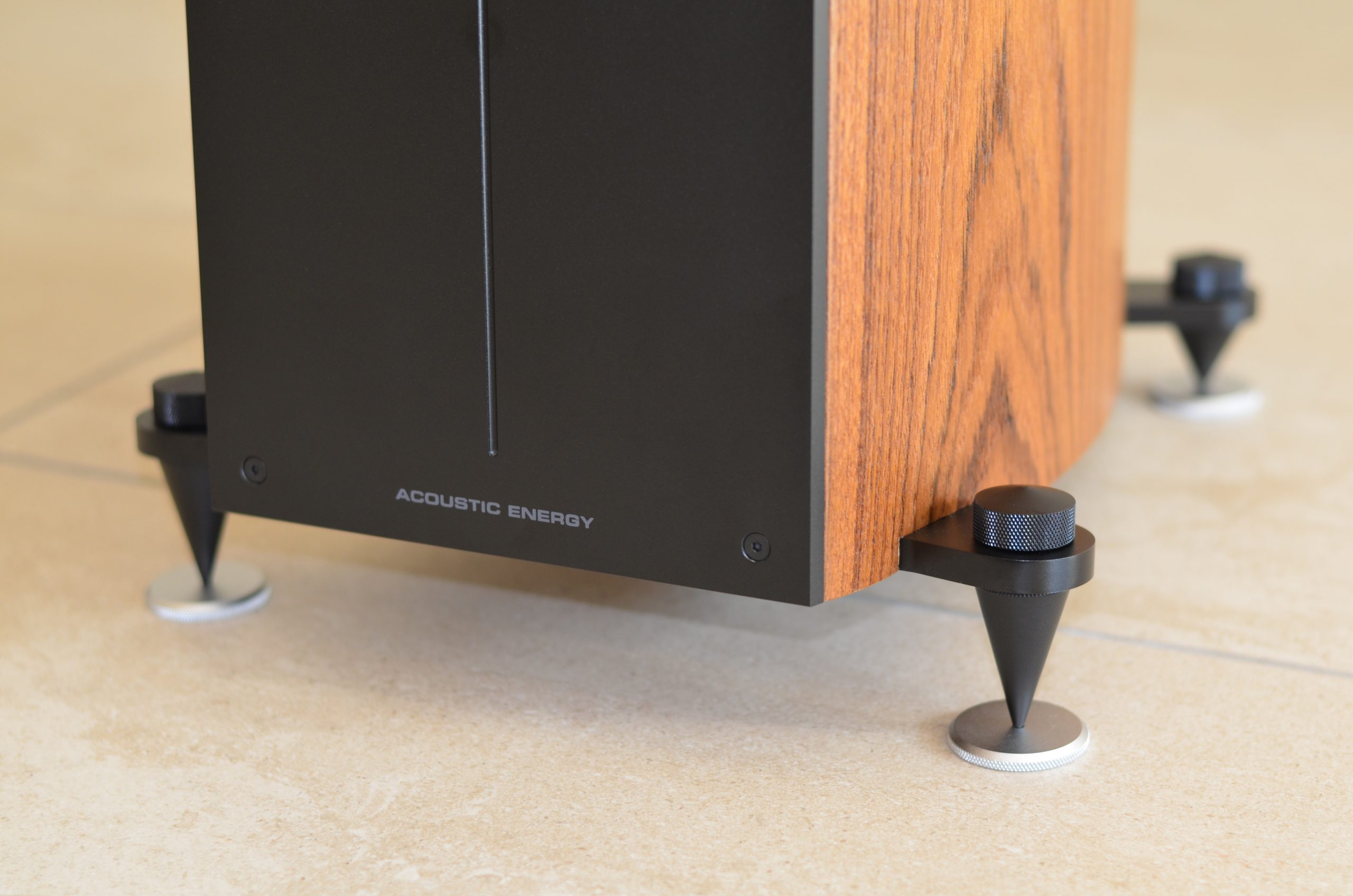
So based on the CORINIUM specifications, what would you recommend as the ideal partnering equipment?
“The Corinium has a high sensitivity of 92dB/2.83V with a 4ohm average load. This arrangement offers the maximum headroom from a given amplifier’s voltage output, assuming it has adequate current capability. Amplifier specifications are not usually clear on this issue. Since 1 watt of power will produce 92dB 1m away from the speakers (very loud), amplifier power is required for dynamics rather than for steady state sound level. This means the amplifier must only produce large voltage peaks for a short amount of time and subsequently, very unlikely to produce any thermal limiting under most normal operating conditions. The important measure is the short-term peak current delivery to show that it’s capable of reproducing dynamics without current limitation. The rule of thumb is if the amplifier can double its 8 ohm output power into 4 ohms then it should offer sufficient performance. To experience full-scale dynamics and realise the best performance from the speakers, our recommendation is for an amplifier that’s rated at 100W or more into 8 ohms. However, if you only listen at low volumes then less power may well be sufficient.”
So in summary how have you’ve achieved the final result?
“By tearing up our previous rule book and starting with a blank sheet of paper, we’ve examined each area of music reproduction over the past three years. We’ve chipped away at the problem resulting in small gains in each area. When added together these small gains have resulted in a speaker, which is markedly more dynamic, more live sounding, more musically involving compared to the previous generation of products. It’s been an exhaustive process examining each element and its relationship to the whole. We tried to avoid spending time and effort on the areas that matter less and instead, invested time and money on areas we found offered us the largest gains.
You’re beginning an audio journey that’ll provide decades of discerning listening pleasure, whether new to our brand or upgrading. You’ll join an exclusive club with the assurance of British design and engineering at its very best, backed by an industry-leading warranty support programme. We think we’ve produced something which not only compares well with its competitors but actually goes beyond that and offers something more sophisticated, more musical, delivered in way previously only available in a rarefied space occupied by the select few.”
…and finally, why the name CORINIUM?
“Cirencester in the beautiful English Cotswolds, our hometown for more than 25 years was an important outpost in Roman Britain. In fact it was the most important town outside of London. They named it Corinium and we’re proud to name our most significant and impressive loudspeaker to-date after our own hometown.”
Specifications
Tweeter
Technical Specifications
Mid-Range Driver | 120mm Carbon Fibre cone
Bass Drivers | 2 x 140mm Carbon Fibre cones
Tweeter | 29mm Soft dome
Design | 3-way reflex loaded with curved RSC cabinet and aluminium baffle
Frequency Range | 32Hz – 30kHz (- 6dB) / 38Hz – 25kHz (-3dB)
Sensitivity | 92dB/m/2.83v
Power Handling | 200w
Crossover Frequency | 260Hz / 3400Hz
Impedance | 4ohms
Dimensions | 1100mm (inc. spikes) x 235mm x 385mm (HxWxD)
Weight | 40kg (per speaker)










